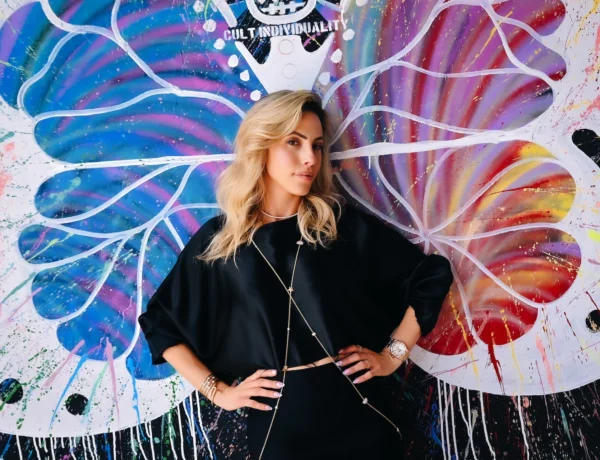Genderless and Fluid Fashion: Breaking Barriers and Promoting Inclusivity
The fashion industry is undergoing a transformative shift as brands increasingly embrace genderless and fluid designs. By challenging traditional fashion norms, this movement promotes inclusivity, celebrates individuality, and redefines how clothing is perceived. Designers like Yotam Solomon, with his Virtue brand, are leading the way in creating apparel that transcends gender boundaries, fostering a more inclusive and diverse fashion landscape.
Understanding Genderless and Fluid Fashion
Genderless and fluid fashion refers to clothing designed without traditional gender distinctions. These garments prioritize functionality, comfort, and self-expression, appealing to individuals across the gender spectrum. This inclusive approach rejects societal expectations tied to clothing, offering consumers the freedom to define their style without constraints.
The Shift Toward Inclusivity in Fashion
The rise of genderless fashion reflects a broader societal shift towards inclusivity and acceptance of diverse identities. Consumers, especially younger generations, are seeking brands that align with their values. By adopting gender-neutral designs, the fashion industry is responding to this demand, demonstrating a commitment to equality and representation.
Yotam Solomon’s Virtue Brand: A Pioneer in Fluid Fashion
Yotam Solomon’s Virtue brand exemplifies the ethos of gender-fluid fashion. Known for its minimalistic yet expressive designs, Virtue offers clothing that can be worn by anyone, regardless of gender identity. The brand’s focus on versatility and self-expression resonates with a growing audience that values individuality over conformity.
The Role of Design in Genderless Fashion
Design plays a crucial role in the success of genderless fashion. Neutral palettes, adaptable fits, and versatile silhouettes are common features of these collections. By focusing on comfort and practicality, genderless designs cater to a wide range of body types and preferences, ensuring accessibility and appeal.
Breaking Down Traditional Norms
Genderless fashion challenges traditional norms by dismantling the binary distinctions often imposed by clothing. This movement encourages consumers to think beyond labels, fostering a culture where clothing is viewed as a means of self-expression rather than a reflection of societal expectations.
The Influence of Youth Culture
Younger generations, particularly Millennials and Gen Z, are driving the demand for genderless fashion. These groups prioritize inclusivity and authenticity, seeking brands that align with their progressive values. Their influence is reshaping the fashion industry, pushing it towards greater innovation and diversity.
The Role of Social Media in Promoting Fluid Fashion
Social media platforms have played a significant role in amplifying the visibility of genderless fashion. Influencers and brands use these platforms to showcase inclusive designs, inspiring conversations around gender identity and self-expression. This digital exposure has been instrumental in normalizing the concept of fluid fashion.
Genderless Fashion in Retail Spaces
Retailers are adapting to the genderless fashion movement by creating inclusive shopping environments. Unisex sections, gender-neutral mannequins, and flexible sizing are becoming more common in stores. These changes make shopping more accessible and affirming for individuals of all gender identities.
Sustainability and Genderless Fashion
Sustainability aligns closely with the principles of genderless fashion. By creating versatile designs that appeal to a broader audience, brands can reduce waste and promote ethical consumption. Gender-neutral collections often focus on high-quality materials and timeless designs, encouraging longer use and reducing the need for frequent replacements.
Challenges in Mainstream Adoption
Despite its growing popularity, genderless fashion faces challenges in achieving mainstream adoption. Cultural resistance, traditional marketing strategies, and logistical hurdles in production can impede progress. Overcoming these barriers requires ongoing education, innovation, and collaboration within the industry.
Collaborations Driving the Movement
Collaborations between brands, designers, and influencers are accelerating the adoption of genderless fashion. Partnerships allow for creative experimentation and broader reach, bringing fluid fashion to new audiences. These collaborations also highlight the versatility and relevance of genderless designs across different markets.
Representation in Media and Campaigns
Representation in fashion campaigns and media is critical for normalizing genderless fashion. Brands that feature diverse models and inclusive messaging demonstrate their commitment to equality. This representation not only fosters acceptance but also inspires consumers to embrace their individuality.
The Economic Impact of Genderless Fashion
The genderless fashion market has significant economic potential, appealing to a diverse consumer base that values inclusivity. By catering to individuals across the gender spectrum, brands can tap into new markets and expand their reach. The financial success of this movement underscores its viability as a sustainable business model.
The Future of Genderless Fashion
The future of genderless and fluid fashion is promising, with growing acceptance and innovation driving its evolution. As more brands embrace inclusive designs, the fashion industry will continue to transform, offering greater representation and choice for consumers of all identities.
Redefining Fashion for a New Era
In conclusion, the rise of genderless and fluid fashion marks a pivotal moment in the industry. By prioritizing inclusivity, challenging norms, and celebrating individuality, this movement is redefining how clothing is perceived and experienced. With pioneers like Yotam Solomon leading the charge, the future of fashion is poised to be more diverse, equitable, and reflective of the evolving identities of consumers worldwide.



